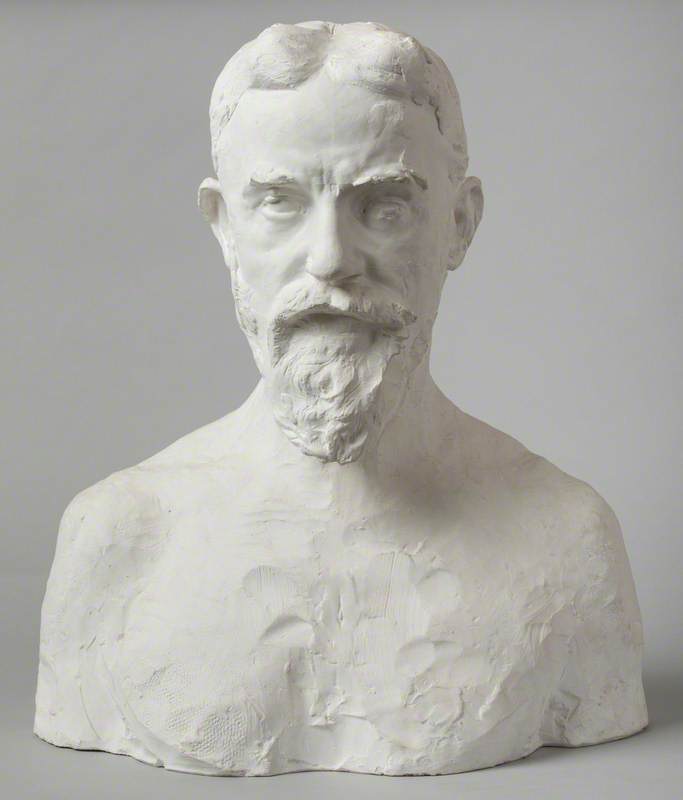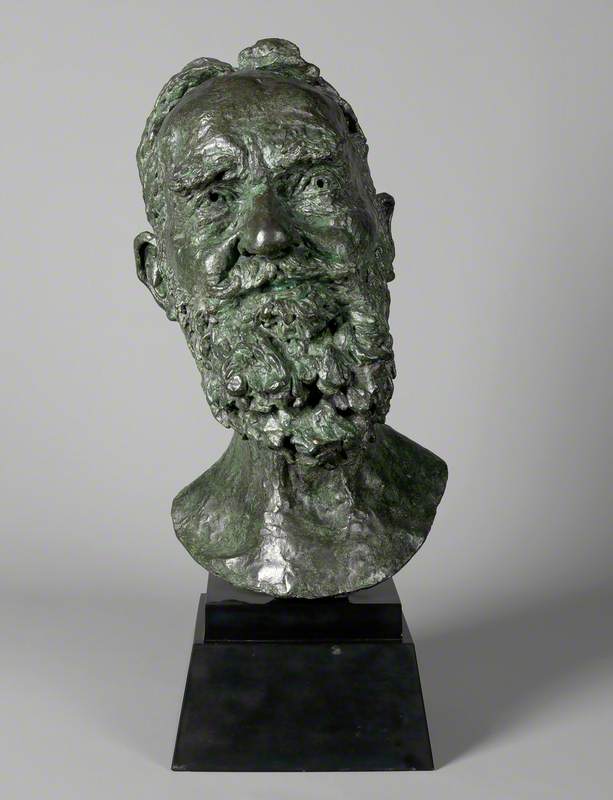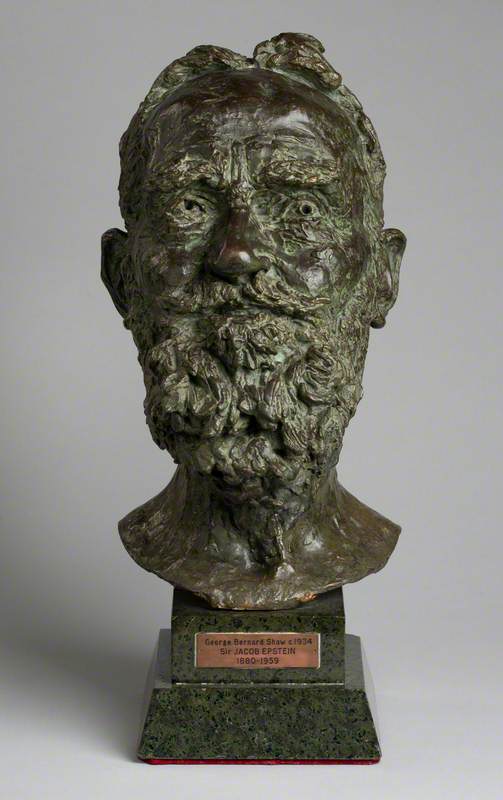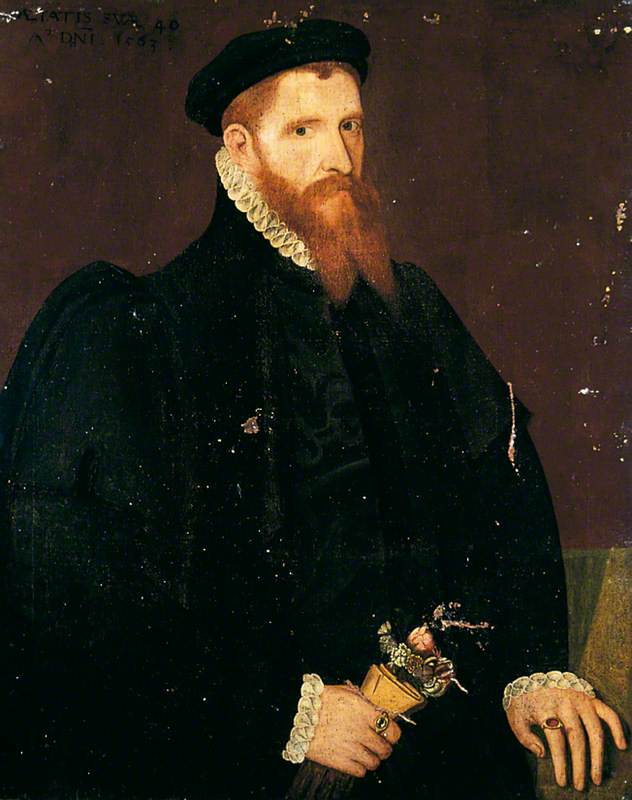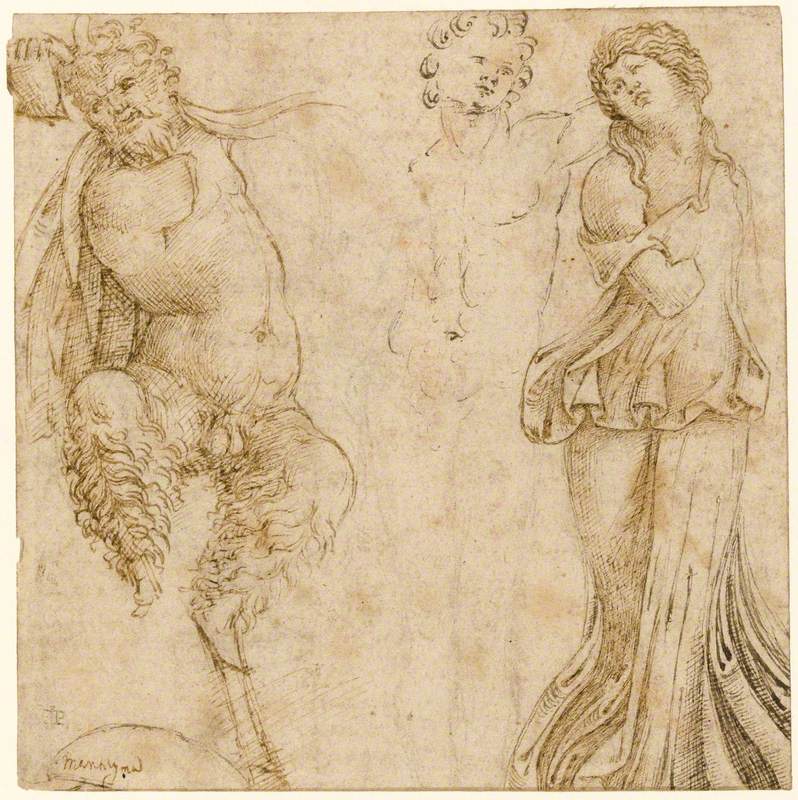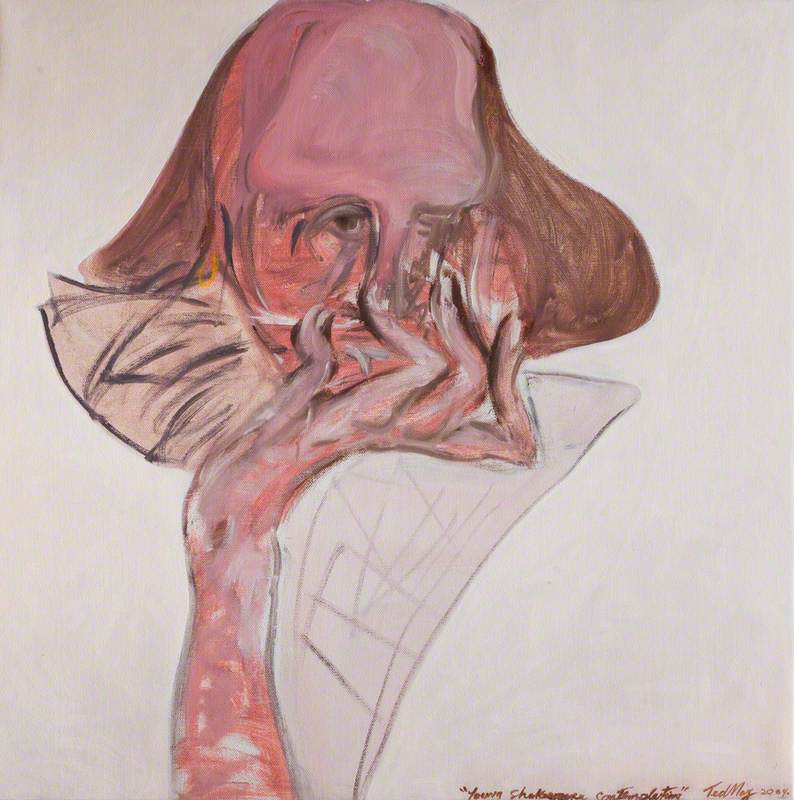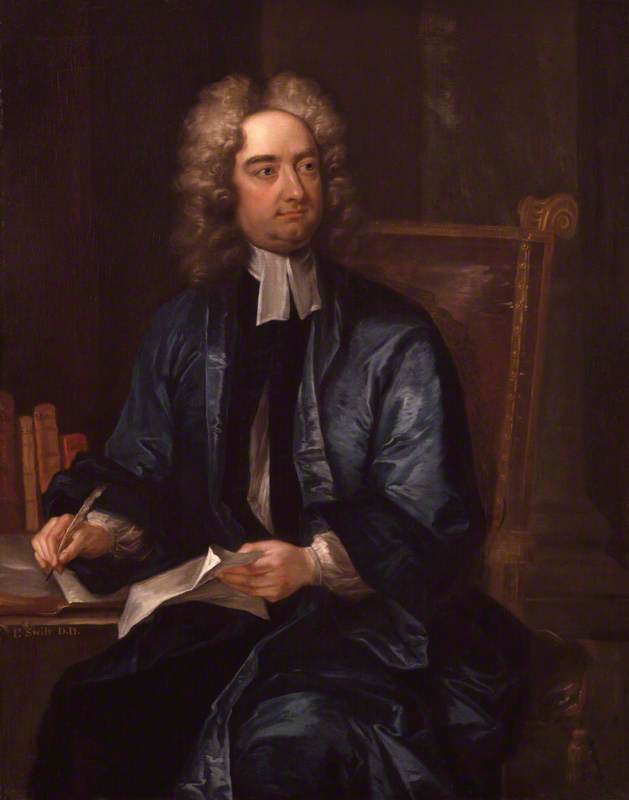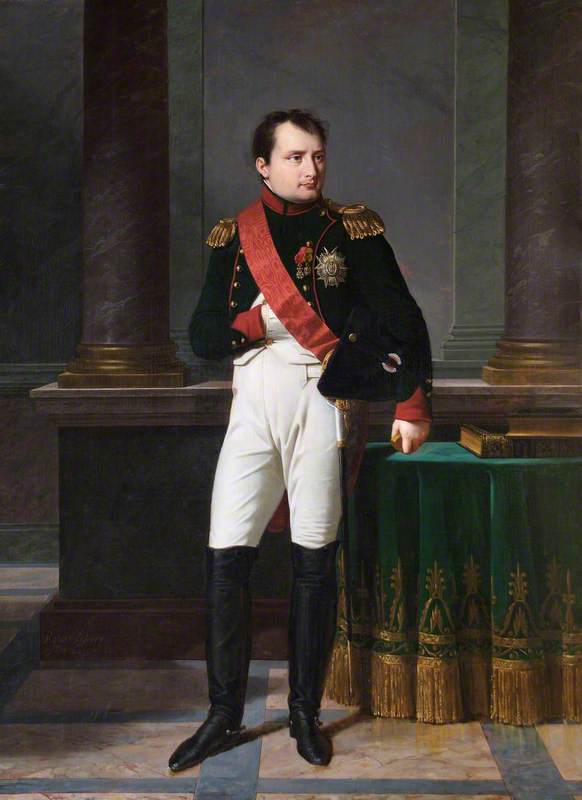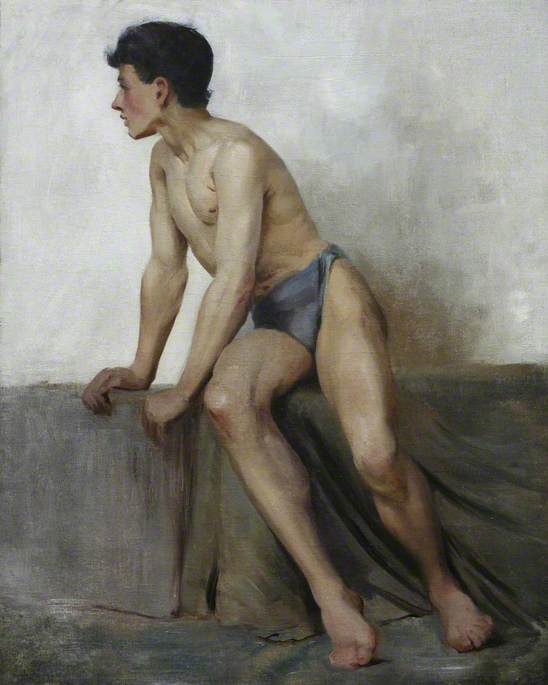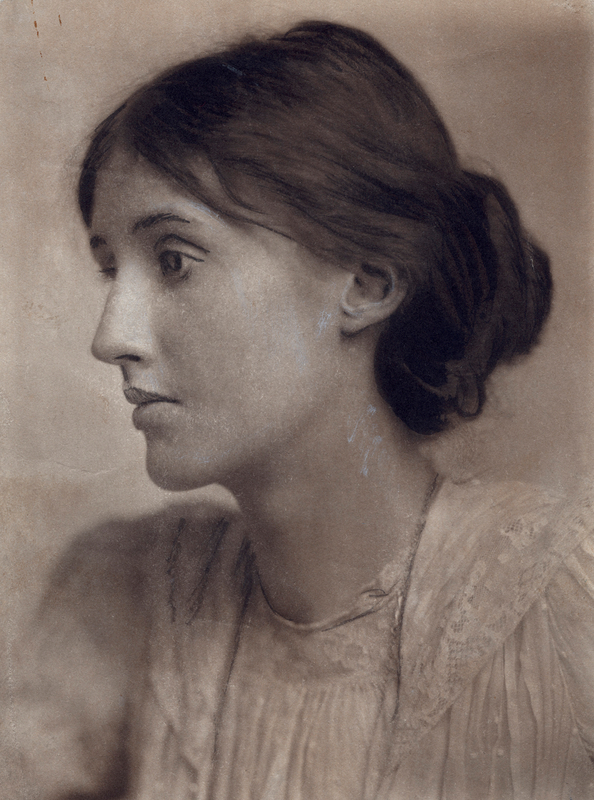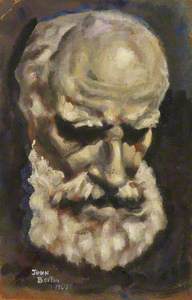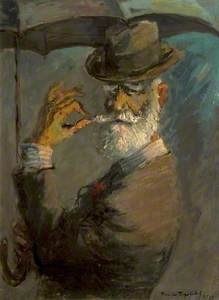'Who was the only person in history to have been awarded both a Nobel Prize and an Oscar?' For a long time, the answer to this classic pub quiz question was simple. It was, of course, the Irish playwright and polemicist George Bernard Shaw (1856–1950) – that is before Bob Dylan won a Nobel Prize for Literature in 2016 (Dylan had won an Oscar in 2000 for Best Original Song).
Now sometimes seen as a divisive figure for his politics, Shaw has somewhat fallen out of the limelight. Yet he was undeniably a pioneering literary figure for his time, who made a great impact on British culture and even politics.
For that reason, paintings and sculptures depicting him in UK collections can be found in abundance. Let's take a look.
Born in 1856 and raised by a low-income Protestant family in Dublin, Shaw allegedly detested school as a young boy.
In 1876, he left Dublin for London following the footsteps of his mother who had left her husband in 1872, taking her two daughters with her to England. Shaw had decided to become a writer and would spend most of his 20s working in the British Museum Reading Room, creating his early novel attempts.
Shaw's early forays in novel writing were not successful. Most of his manuscripts were rejected by publishers. Instead, he turned his attention towards socialism, fixated with Karl Marx's Das Kapital (coincidentally also largely written in the British Museum). Around this time, he joined the Fabian Society, a newly formed, middle-class socialist group and political think tank that would greatly influence the establishment of the Labour Party when founded in 1900.
Other members of the group included the poets Edward Carpenter and John Davidson, and the sexologist Havelock Ellis.
Shaw became a central figure within the Fabian Society. The ideas and principles under discussion would reappear later as themes in his theatrical work.
Although many historians debate the significance and impact of Bernard Shaw in the history of socialism, others regard him as someone who 'set the early tone' for British socialist thought. In 1890, he published a three-page pamphlet titled 'What Socialism Is' that explored issues of wealth inequality, private property, labour, poverty and education. Unlike other left-wing political groups of that era, the Fabians opposed direct revolution or violence as a means to create political change.
His career started to take off when he began writing for the Saturday Review as a theatre critic between 1895 and 1898. Around this time he also began to develop his own ideas for plays.
In 1894, Shaw debuted Arms and the Man, a comedy satirising Victorian love and class. In the same year, he began writing Candida, which was first performed in 1897.
Eventually, he would write the play Pygmalion in 1912, named after the Greek mythological figure. He was greatly influenced by W. S. Gilbert (of Gilbert and Sullivan fame) who had produced the play Pygmalion and Galatea in 1871.
John Clements (1910–1989), Conducting a Rehearsal of 'Pygmalion' by George Bernard Shaw
1972
Laurence Irving (1897–1988) 
Renowned French sculptor Auguste Rodin (1840–1917) began creating a bust of Shaw in 1906. Shaw had travelled to Paris to sit in the sculptor's studio. The same year he moved to Shaw's Corner in Hertfordshire, where both the plaster and final versions can still be viewed today.
The property, along with Shaw's collection, was bequeathed to the National Trust in 1950.
Rodin created this sculpture when Shaw was 49. The bronze bust shows his unclothed head and shoulders.
Around the same time, Shaw introduced Rodin to the photographer Alvin Langdon Coburn. Both Shaw and the photographer witnessed the unveiling of Rodin's The Thinker, so decided to imitate Rodin's iconic sculpture. Shaw suggested that Coburn make a nude photographic portrait of him, in the same pose as the sculpture.
In 1934, sculptor Jacob Epstein (1880–1959) created this bronze bust of Shaw, which can be found in the National Portrait Gallery.
By this time, Shaw was in his 70s and had become the foremost writer and dramatist in British theatre.
Another version by Epstein can be found in Aberdeen Art Gallery.
Aged 69, he won the Nobel Prize for Literature in 1925. The committee had selected Shaw after the praise for his play Saint Joan (1923). Although he accepted the award, he rejected the monetary prize that went with it, declaring: 'my readers and my audiences provide me with more than sufficient money for my needs.'
After Saint Joan, Shaw took a break from writing plays. In 1928 he wrote The Intelligent Woman's Guide to Socialism and Capitalism, a book that encouraged female readers to engage with Marxist thought. Within this text, Shaw discussed the lack of equal pay for women within capitalism economic systems. The design for the cover was created by British sculptor Eric Henri Kennington.
So why is Shaw's Oscar statue in a UK collection?
Academy Award of Merit
(Oscar statuette) 1938
Austin Cedric Gibbons (1895–1960) and George M. Stanley (1903–1977) 
Shaw received his Oscar in 1938, for his adaptation of his own play Pygmalion, a popular Greek mythological story that had a resurgence of popularity during the Victorian era. Artists like the Pre-Raphaelite painter Edward Burne-Jones (1833–1893) furthered the public's fascination for the subject.
Although Shaw was awarded the Academy Award for Best Adapted Screenplay, he was not pleased, allegedly saying: 'It's an insult for them to offer me any honour as if they had never heard of me before – and it's very likely they never have. They might as well send some honour to George for being King of England.'
Made from gold-plated Britannium metal, the Oscar was designed by Austin Cedric Gibbons and sculpted by George M. Stanley.
Pygmalion and the Image: The Godhead Fires
1878
Edward Burne-Jones (1833–1898) 
Shaw kept the newly designed Oscar in his home in Hertfordshire (where it can still be found). The statuette shows an image of a stylised knight holding a sword, standing on a reel of film with five spokes, each representing a branch of the Academy: Actors, Writers, Directors, Producers and Technicians.
In his house, one can also view this marble sculpture of his hand and wrist.
Hand and Wrist of George Bernard Shaw (1856–1950)
c.1932
Zsigmond Kisfaludi Strobl (1884–1975) 
Shaw died in 1950, an incredibly wealthy man who was widely revered as the greatest playwright after Shakespeare.
His unique cult of personality extended beyond the literary sphere and the announcement of his death made an international impact: so much so that the lights of Broadway were temporarily dimmed.
Lydia Figes, Content Creator at Art UK











